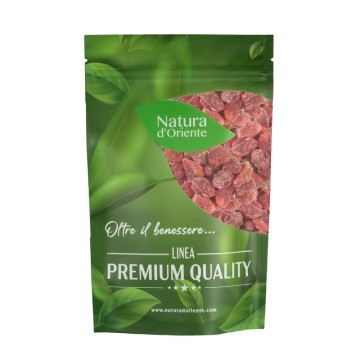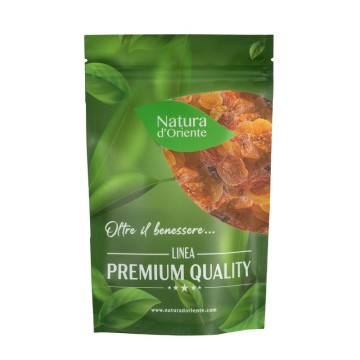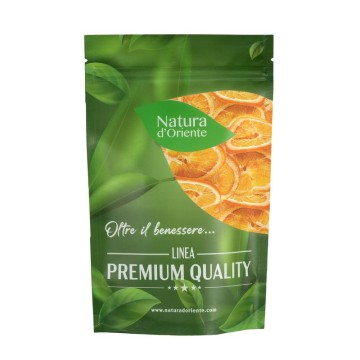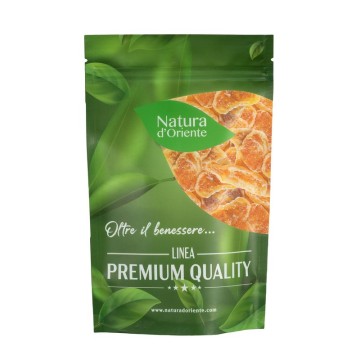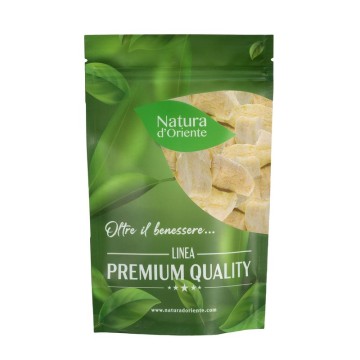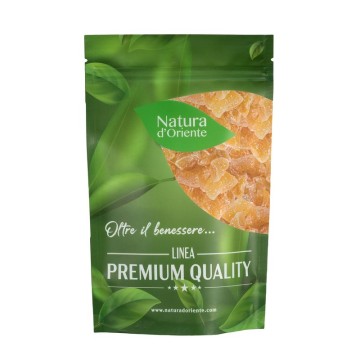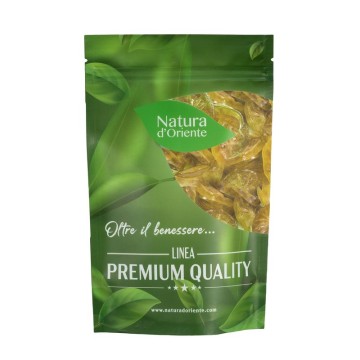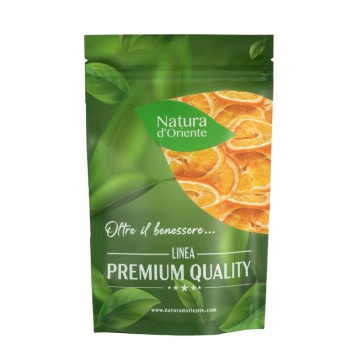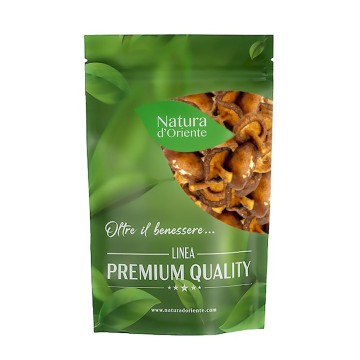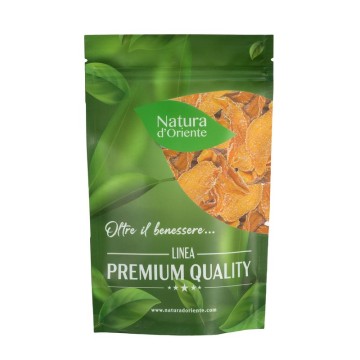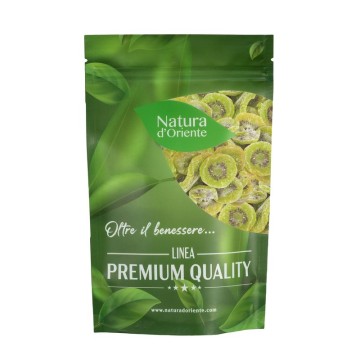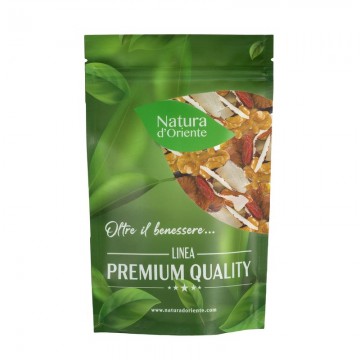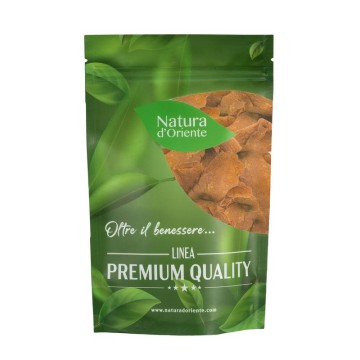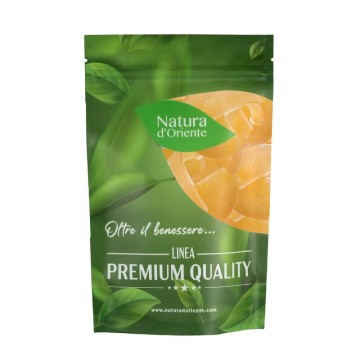Natural dehydrated ginger without added sugar and without fructose
The spice of ginger or ginger has been known for centuries in the kitchen for its taste, and in oriental medicine for the well-being it brings. It comes from a plant rich in properties, also available in the version of dehydrated ginger. The drying process does not affect the chemical compounds contained, especially if it is natural ginger without added sugar or fructose.
Natural dried ginger: properties and benefits
Born spontaneously in the East, the ginger plant has always been appreciated for its healthy and taste characteristics, available in its rhizome, or underground part. In recent times, dehydrated ginger has been transformed by the food industry as a precious flavoring and flavoring, now widespread all over the world.
Within Chinese medicine, ginger was known for its properties considered at the time to be a natural anti-inflammatory, suitable for purifying the body, especially with good digestive, anti-nausea and anti-dizziness effects. In some cases, it was also referred to as an aphrodisiac.
We know today that the active ingredients of natural ginger are concentrated in the rhizome, the so-called root, which contains antioxidant substances such as gingerols, shogaoli, vitamins, mineral salts , in addition to resins and mucilages.
The antioxidant and anti-nausea properties of ginger derive from polyphenols, the aforementioned gingerols and shogaols, which are also the substances that make it spicy.
Ginger is known for its benefits on digestion , as a protective food for the gastric mucosa, increases the muscle tone of the stomach, and is a valuable food in counteracting the accumulation of toxins and bacterial fermentation in the digestive process. It also promotes the elimination of intestinal gas. Known as a stimulant for the correct assimilation of food, it improves gastrointestinal motility.
The rhizome of ginger is also rich in anti-emetic properties, capable of reducing the symptoms of motion sickness (such as dizziness, nausea and regurgitation). The intake of natural ginger can help counteract the symptoms of esophageal reflux. For this reason, natural ginger is also used as a calming agent for stomach pain .
We often hear about its purifying properties useful for proper digestion, because for many centuries it has been used as a natural antiseptic. Sliced ginger is also used not only for disinfection, but also against halitosis , to promote fresh and fragrant breath with a few bites.
Among its properties famous, even in the dehydrated version of ginger, there is the ability to relieve sore throat , in fact historically it has been used to treat hoarseness and loss of voice when talking too much. When cold air enters the lungs during the winter season, a slice of dehydrated ginger can help the oropharyngeal system against cold ailments .
Dried ginger is recognized in modern times above all for the antioxidant benefits, caused by the substance of gingerol, the polyphenol that slows down the oxidation of cells and, therefore, their aging. Gingerol in the body creates an enzyme, which causes an antioxidant effect that seems to be greater than that of vitamin E - a vitamin already present in natural sugar-free ginger anyway.
It is also known as a beneficial food to counteract disorders related to the menstrual cycle such as pain in the pelvic area, nausea and headache; and to reduce the amount of flow when it is too abundant.
The dehydrated version of ginger also guarantees excellent advantages: during the drying procedure, the concentration of polyphenols increases.
This version of sugar free ginger is excellent for diets in which to avoid added sugars and above all fructose, which could increase the glycemic index and is not present in this product.
Origins and History of cultivation
The ginger plant is native to tropical Asia, and has been used in cooking for centuries in the form of a spice, obtained from its rhizome, the underground part.
The aromatic and spicy spice was already highly appreciated at the time of Confucius (5th century BC), who in his writings recalls how it was used in Chinese culture. For oriental medicine it represented a hot element, suitable for fighting the cold and rebalancing the corpo.
Ginger was also considered a valuable food in Greco-Roman culture, and the doctor Dioscorides Pedanio (1st century AD) recommended it to warm and calm the stomach. Among the Arab peoples it was also known as an energizing and aphrodisiac spice.
It was used as a food preservative, and for this reason, according to some, ginger possessed magical characteristics (preserving food, it looked like a miraculous spice).
gingifer and then the current ginger) and its spice was valuable in trade. In the sixteenth century it also reached South America, from Europe.
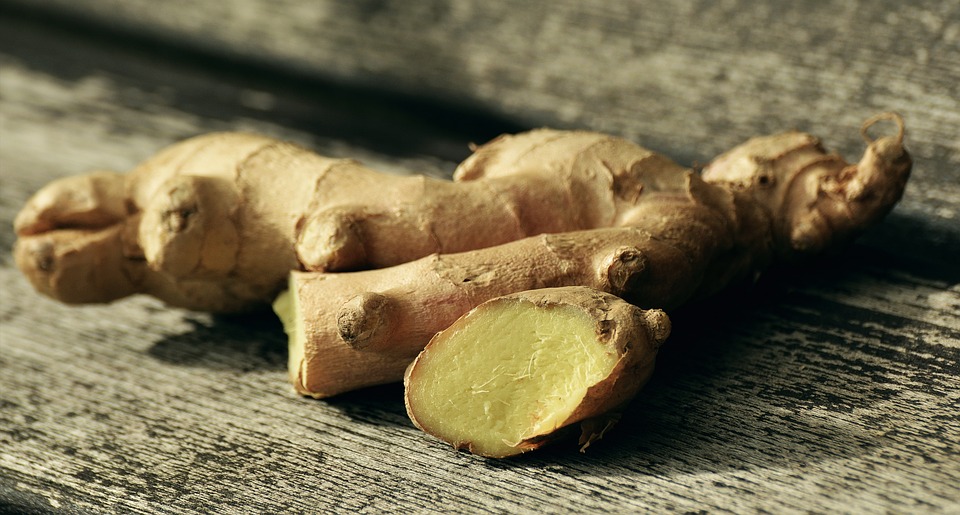
Today ginger is grown throughout the tropical and subtropical belt of the planet. The underground part (the rhizome) is collected, cleaned and used to obtain fresh ginger, or to create the dehydrated version dried in the sun, transformed into powder and sold as a spice.
Fresh ginger can be dehydrated and cut into slices, into small pieces or cubes, ground or candied.
Natural ginger can be dehydrated without sugar added, or with the addition of sugars, such as fructose, on candied pieces.
Plant and fruit
The herbaceous plant Zingiber officinale is a perennial plant, and belongs to the Zingiberaceae family.
It is native to the tropical Far East and is classified as a rhizomatous plant, which has a fleshy and branched rhizome (an underground shoot). From this rhizome are born hollow stems - formed by leaves - and other stems with yellow-green inflorescences. The real flowers, on the other hand, are small and white, while the fruit is woody and not used in cooking.
Ginger bushes expand, reaching up to half a meter in width and height.
Ginger can be grown as an indoor plant or in the home garden, the important thing is that it is present in warm climates, where temperatures do not drop below 5 ° C.
The rhizome is harvested in the winter months, when the ginger plant has accumulated enough essential oil, usually between January and February.
Nutritional values of sugar-free dehydrated ginger
Dried ginger has an excellent caloric intake, since it provides 290 Kcal for every 100 grams, but is lower than other types of ginger in this version without added sugar.
It is dehydrated ginger without sugar and without fructose, composed only of carbohydrates (72 g), with 0% fat , and about 6% fiber.
This type of sugar free ginger, however, makes available the important active ingredients contained in the essential oil, composed of zingiberene , and the polyphenols gingerols and shogaols that make its pungent flavor.
Natural ginger contains among these phenolic substances the 6-gingerol which when dried turns into 6-shogaol - much studied to better evaluate the possible antioxidant properties and anti-inflammatory.
Ginger contains good doses of vitamin E , vitamin B6, and mineral salts such as potassium, magnesium, zinc, copper and manganese.
How to consume dehydrated ginger in the kitchen or as a snack
As a spice, ginger gives a pungent taste to dishes, in its various versions - powdered or dried.
Dehydration enhances the properties of fresh ginger, makes it spicier in taste and sliced dried ginger is often used to flavor yogurt, smoothies, ice cream or in dried fruit mixes; as well as in some fruit salads where its taste blends well with the other ingredients.
In oriental cuisine it was used to flavor sweet or savory dishes - in Japanese the ginger in pieces is served as a sweet and sour pickle, with sashimi.
Today it is used everywhere in the world, for first and second courses, soups , drinks, cocktails.
The versions of dehydrated ginger without sugar and without fructose , are very popular for those looking for a dietary and satiating s nack.
Sliced natural sugar-free ginger has a marked flavor, which can also become an ingredient for the preparation of cakes, biscuits, and other sweets, where other sugar can be avoided.
When ginger is sugar-free, it can be consumed as a snack hunger-breaker or to create energy bars suitable for those who practice physical activity .
Ginger dis

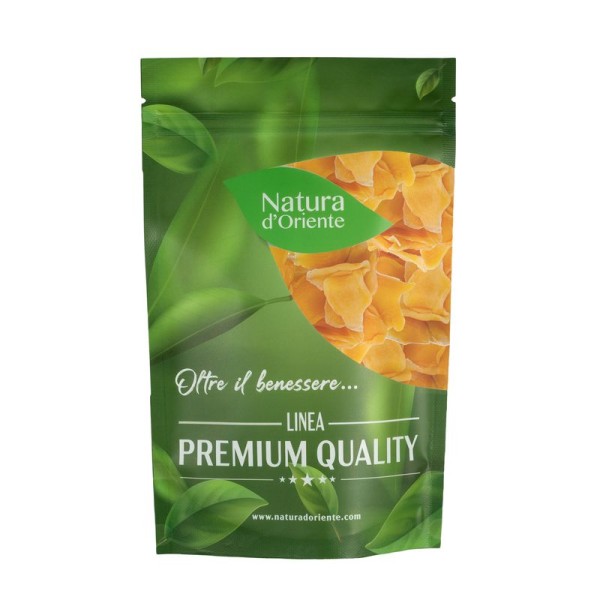









 No reward points for this product.
No reward points for this product.

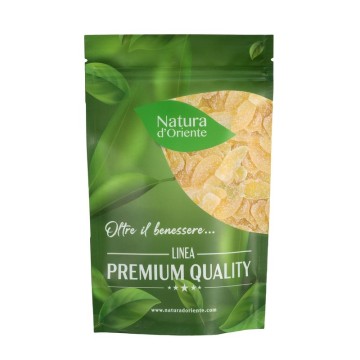
![Natural dehydrated grapefruit without added sugar [NATURADORIENTE]](https://www.naturadoriente.com/10190-home_default/pompelmo-naturale-disidratato-senza-aggiunta-di-zucchero.jpg)
